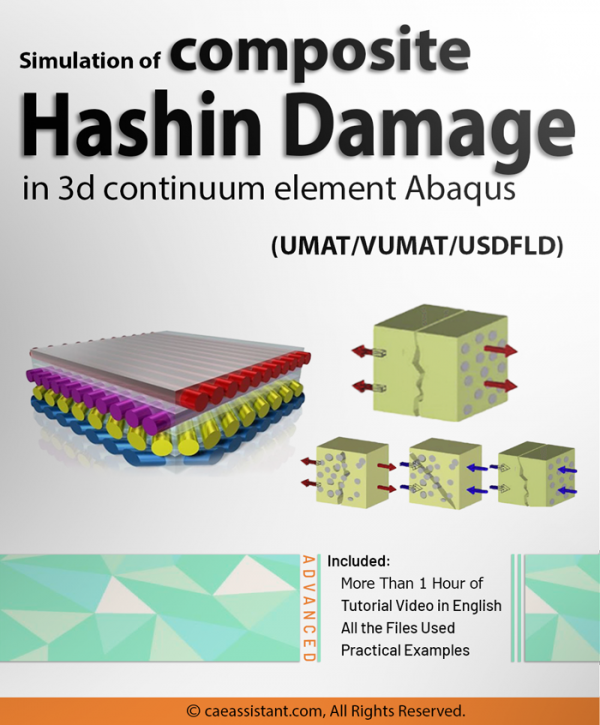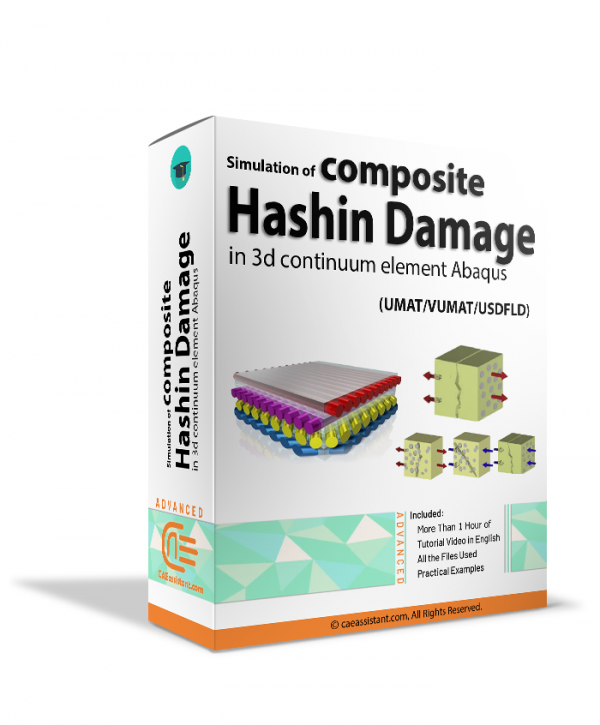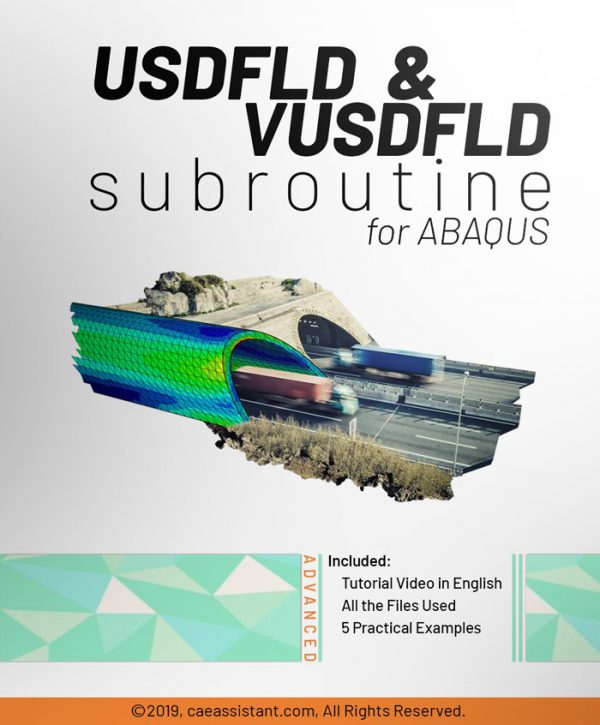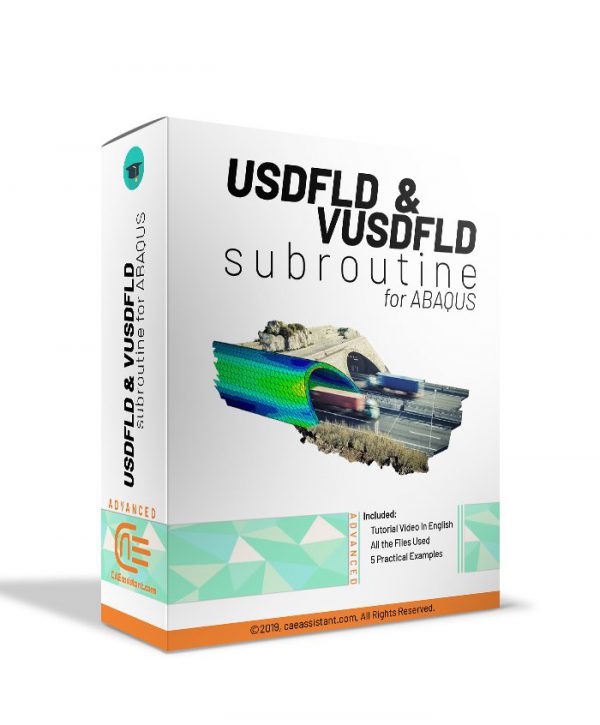hashin
Composite pressure vessel analysis with Semi-Geodesic winding
Nowadays, pressure vessels are produced using various methods, one of which is filament winding. This package teaches the simulation of composite pressure vessels produced using the filament winding method. Filament winding itself has different methods, and one of the most widely used winding methods for producing composite vessels is the semi-geodesic filament winding method. In this package, first, the semi-geodesic method is described. Then, the simulation of a semi-geodesic vessel is performed using a Python script. Additionally, a UMAT subroutine is used to simulate the failure of composite materials used in the vessel.
Simulation of composite Hashin damage in 3d continuum element in Abaqus (UMAT-VUMAT-USDFLD)
In this training package, the 3D continuum HASHIN damage initiation model is prepared via three subroutines (USDFLD, UMAT and VUMAT).This training package teach you subroutines line-by-line. It should be noted that after damage initiation, failure occurs suddenly and in the form of a reduction in properties in the model. The HASHIN theory for this package is based on Kermanidis article titled” FINITE ELEMENT MODELING OF DAMAGE ACCUMULATION IN BOLTED COMPOSITE JOINTS UNDER INCREMENTAL TENSILE LOADING “.
Introduction to USDFLD and VUSDFLD Subroutine
In this usable tutorial, the material properties can change to an arbitrary dependent variable. One of the most important advantages of this subroutine is simplicity and applicability. Various and high usage examples are unique characteristics of the training package.
This training package includes 5 workshops that help you to fully learn how to use USDFLD and VUSDFLD subroutines in Abaqus software. By means of these subroutines, you will have expertise redefine field variables at a material point by the solution dependence of standard and explicit, respectively.





